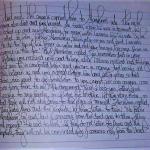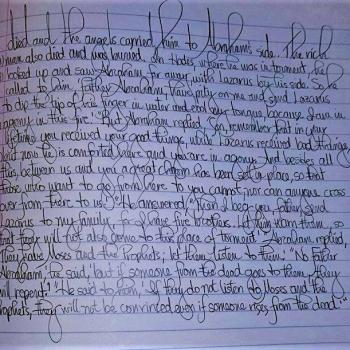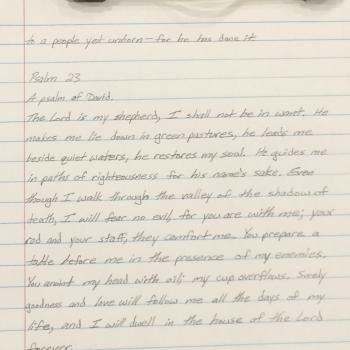I’ve recently spent time investigating a manuscript called the Great Bible of Mainz. Why? It’s a Latin Bible manuscript completed by a single scribe around the time of the invention of the Gutenberg Press in 1453. It includes several inspiring features for those who continue the practice of Bible handwriting today.
A Single Scribe
Unlike many manuscripts of the time, the Great Bible of Mainz was completed by a single scribe. This is a remarkable accomplishment, as many complete Bibles from the medieval period were multi-scribe works.
A “Quick” Copy
This unknown scribe completed his manuscript in 15 months! Compare this with Thomas a Kempis, who completed the same type of manuscript in 12 years. Even with modern tools, my first handwritten Bible took nearly three years.
This means the scribe was both neat and quick, committing his full-time energy to the project for over a year. The only reason the time period is known is due to the scribe adding the start and end dates of April 4, 1452 to July 9, 1453.
A Large Copy
Unlike the smaller handwritten copies popular in the thirteenth century, this scribe’s fifteenth century work was a large, two-column work likely created for public reading in a church. Its pages are 22 inches by 16 inches, much larger than today’s traditional 9”x6” books.
A Well Traveled Copy
The manuscript is now at the U.S. Library of Congress. It’s listing there notes its known history:
The Giant Bible of Mainz was purchased by Lessing J. Rosenwald and gifted to the Library of Congress on April 4, 1952, five hundred years after the manuscript was begun. The Giant Bible originally belonged to Heinrich von Stockheim, a curator at the Cathedral of Mainz and his inscription appears on the first leaf of the manuscript. It remained in the Cathedral of Mainz until 1631, when the Bible was seized by King Gustavus Adolphus II of Sweden as a prize of war. The King gave the Bible to Bernhard, Duke of Saxe-Weimar, a member of his military guard who died in 1639. The Bible passed down through members of the duke’s family until 1951, when Rosenwald purchased it through the bookseller H.P. Kraus for the Library of Congress.
Why does any of this matter? For me, this manuscript has become very inspirational. If one scribe could sit down with a feather pen over 500 years ago and crank out a large-print Latin Bible in 15 months, can’t I at least keep up a regular pattern of handwriting Scripture?
In times when I am ready to give up and quit, stories like this remind me I am not alone in my endeavor to grow in my walk with God through writing out the words of the Bible.
+++
Dillon Burroughs is the author and coauthor of numerous books and blogs about his experiences of handwriting the Bible at the Holy Writ Project on Patheos.com. Find out more about Dillon at Facebook or Twitter.












